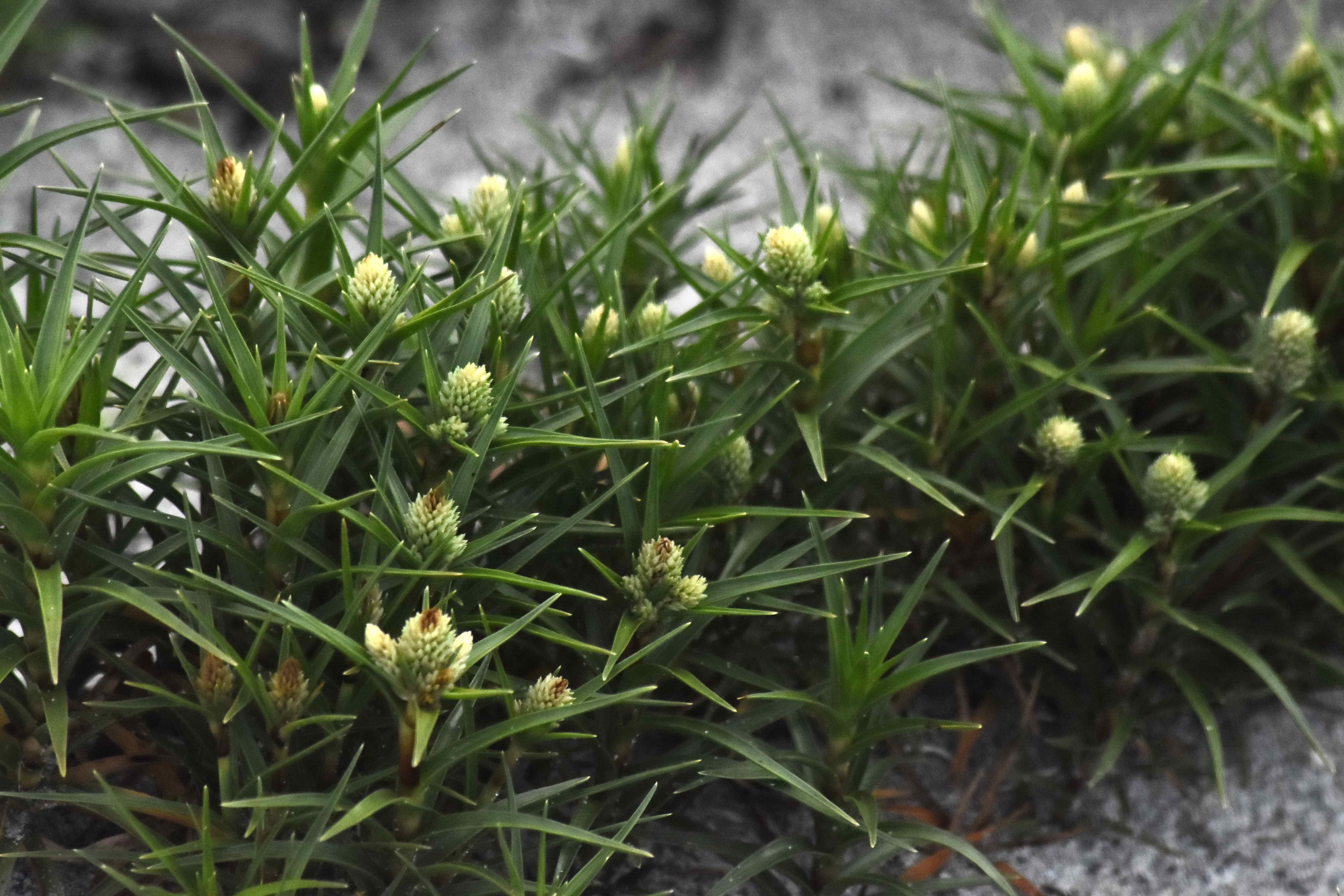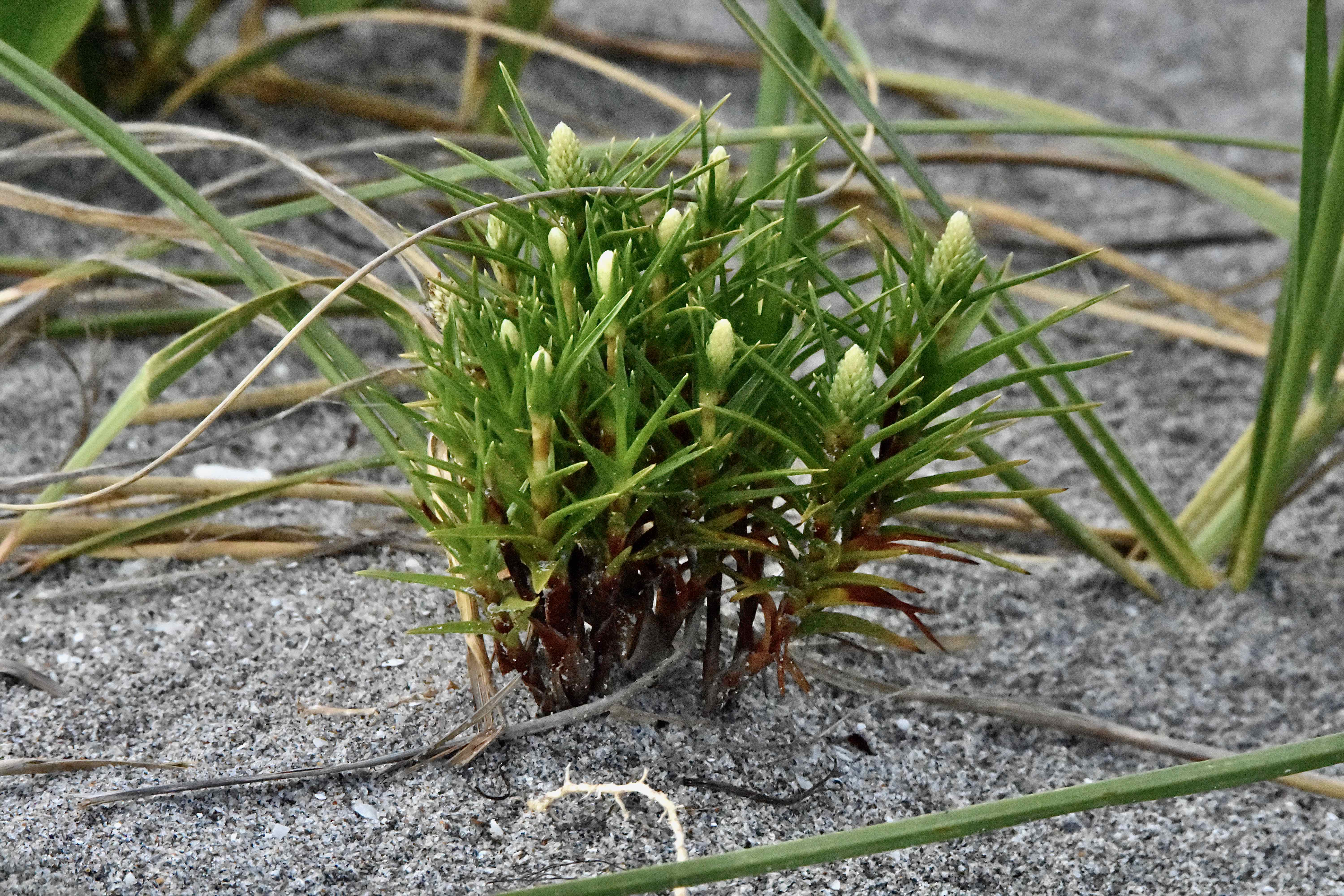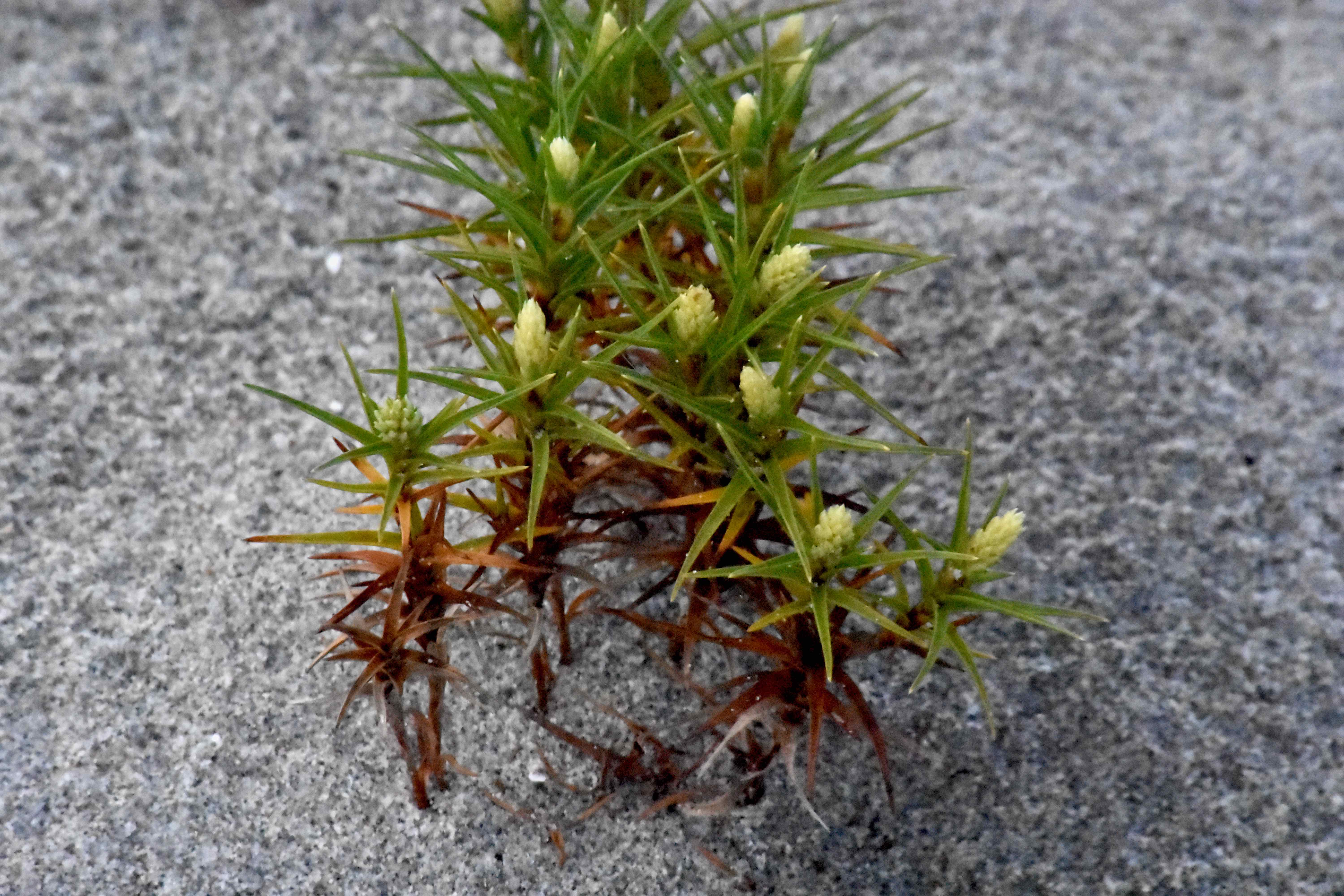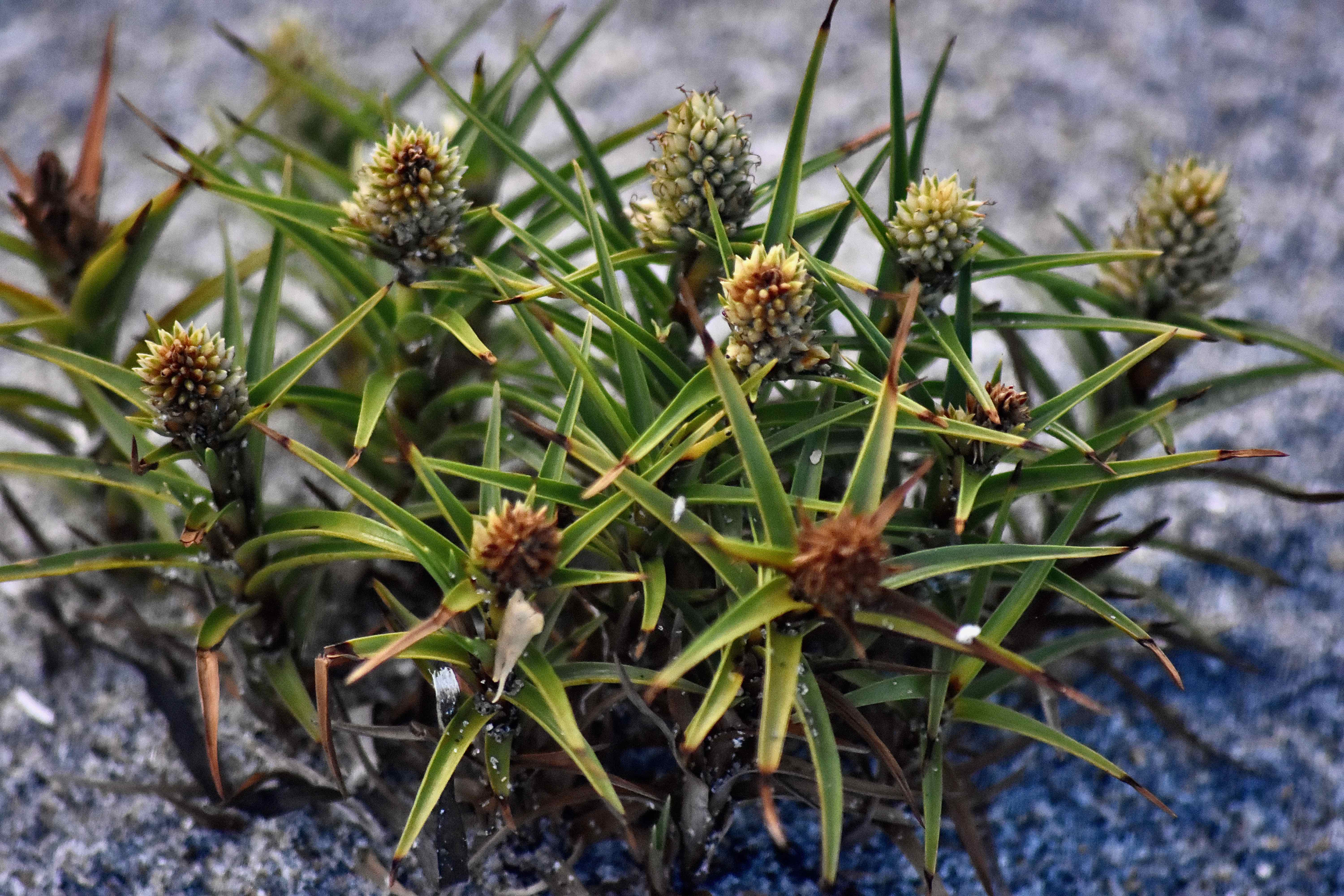
Beach star, photographed at Hobe Sound National Wildlife Refuge — Jupiter Island Unit, Hobe Sound, Martin County, in September 2016.
Look along the dunes where they start to distance themselves from crashing waves and transition the shore to dry land and you'll likely see this plant: beach star, Remirea maritima.
It's among the first plants to grow on the dunes, and an important one, because its roots help stabilize sand against the action of waves and wind. It's considered a pioneer species, meaning it's among the first plants to grow in newly disturbed, or cleared, areas.
Beach star is a Florida native, but it is state-listed as endangered. The Institute for Regional Conservation in Delray Beach considers it imperiled in South Florida. The major culprits: development and loss of habitat from erosion. Florida is the only place in the country where it grows, and it's restricted to the Southeastern coast, including Indian River, Martin, Palm Beach, Broward, Miami-Dade and Monroe counties. The venerable Atlas of Florida Plants also includes Volusia and St. Lucie counties as part of beach star's range. (It also uses Cyperus pedunculatus as the scientific name for beach star.)
Beyond our sunny shores, beach star is found growing as a native in the Caribbean, the Yucatan of Mexico, Central America and South America. It also grows in tropical places in the Old World, including Africa, Asia, the Pacific islands and Australia. Globally, it's considered secure, not in danger of extinction.
It stands only a few inches tall and can be a solitary plant or part of a clump. It's often seen growing in a line, popping up at intervals that tell you that it is sending out rhizomes, or undergrown stems, from which new plants are growing.
The leaves are stiff, long and narrow and curled inward, coming to a point at the end. They grow from the stem in roughly a star pattern. The flowers are yellow-green, not exactly show stoppers. They are wind-pollinated, and bloom in the summer and fall.
Beach star is grown commercially in Florida, and used primarily for beach restorations because of its ability to bind sand. It is drought and salt tolerant, not suprising considering where it grows. But we also have read that it can be a difficult plant to grow.
We humans have found other uses for beach star. In some traditional medicines, the plant is used to make a tea to treat diarrhea, kidney problems, to cause sweating, break fevers and as a analgesic, or pain-reliever. A 2014 study of a beach star extract, made from the roots and rhizomes, showed promise as a pain reliever, anti-inflammatory and anti-oxidant in mice.
Another study, conducted by the Department of Pharmacy at the Federal University of Sergipe and published in 2015, found beach star extracts to have "significant antioxidant capacity" and could have potential as a treatment for melanoma, the most severe form of skin cancer. The tests were done in mice.
Beach star is a member of Cyperaceae, the sedge family. Other names and spellings include: beachstar and beach-star.
Nathaniel P. Reed Hobe Sound National Wildlife Refuge — Jupiter Island Unit



